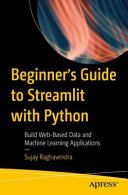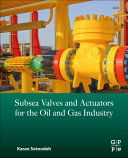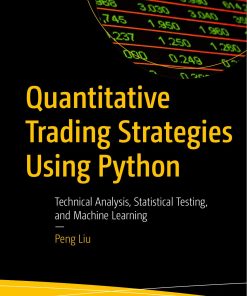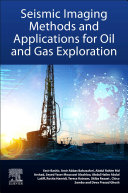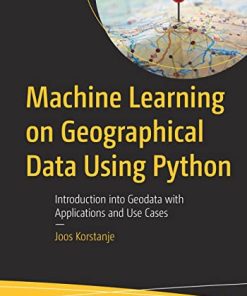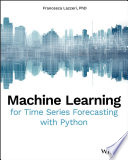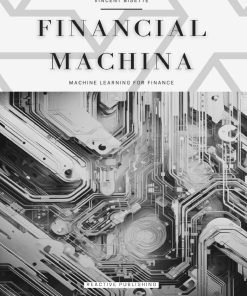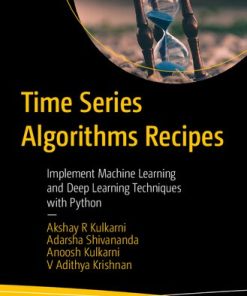(Ebook PDF) Machine Learning Guide for Oil and Gas Using Python 1st edition by Hoss Belyadi, Alireza Haghighat 0128219300 9780128219300 full chapters
$50.00 Original price was: $50.00.$25.00Current price is: $25.00.
Machine Learning Guide for Oil and Gas Using Python 1st edition by Hoss Belyadi, Alireza Haghighat full chapters – Ebook PDF Instant Download/DeliveryISBN: 0128219300, 9780128219300
Full dowload Machine Learning Guide for Oil and Gas Using Python 1st edition after payment.

Product details:
ISBN-10 : 0128219300
ISBN-13 : 9780128219300
Author: Hoss Belyadi, Alireza Haghighat
Machine Learning Guide for Oil and Gas Using Python: A Step-by-Step Breakdown with Data, Algorithms, Codes, and Applications delivers a critical training and resource tool to help engineers understand machine learning theory and practice, specifically referencing use cases in oil and gas. The reference moves from explaining how Python works to step-by-step examples of utilization in various oil and gas scenarios, such as well testing, shale reservoirs and production optimization. Petroleum engineers are quickly applying machine learning techniques to their data challenges, but there is a lack of references beyond the math or heavy theory of machine learning. Machine Learning Guide for Oil and Gas Using Python details the open-source tool Python by explaining how it works at an introductory level then bridging into how to apply the algorithms into different oil and gas scenarios. While similar resources are often too mathematical, this book balances theory with applications, including use cases that help solve different oil and gas data challenges.
Machine Learning Guide for Oil and Gas Using Python 1st Table of contents:
Chapter 1. Introduction to machine learning and Python
Introduction
Artificial intelligence
Data mining
Machine learning
Python crash course
Anaconda introduction
Anaconda installation
Jupyter Notebook interface options
Basic math operations
Assigning a variable name
Creating a string
Defining a list
Creating a nested list
Creating a dictionary
Creating a tuple
Creating a set
If statements
For loop
Nested loops
List comprehension
Defining a function
Introduction to pandas
Dropping rows or columns in a data frame
loc and iloc
Conditional selection
Pandas groupby
Pandas data frame concatenation
Pandas merging
Pandas joining
Pandas operation
Pandas lambda expressions
Dealing with missing values in pandas
Dropping NAs
Filling NAs
Numpy introduction
Random number generation using numpy
Numpy indexing and selection
Chapter 2. Data import and visualization
Data import and export using pandas
Data visualization
Chapter 3. Machine learning workflows and types
Introduction
Machine learning workflows
Machine learning types
Dimensionality reduction
Chapter 4. Unsupervised machine learning: clustering algorithms
Introduction to unsupervised machine learning
K-means clustering
Hierarchical clustering
Density-based spatial clustering of applications with noise (DBSCAN)
Important notes about clustering
Outlier detection
Local outlier factor using scikit-learn
Chapter 5. Supervised learning
Overview
Linear regression
Logistic regression
Metrics for classification model evaluation
Logistic regression using scikit-learn
K-nearest neighbor
Support vector machine
Decision tree
Random forest
Extra trees (extremely randomized trees)
Gradient boosting
Extreme gradient boosting
Adaptive gradient boosting
Frac intensity classification example
Handling missing data (imputation techniques)
Rate of penetration (ROP) optimization example
Chapter 6. Neural networks and Deep Learning
Introduction and basic architecture of neural network
Backpropagation technique
Data partitioning
Neural network applications in oil and gas industry
Example 1: estimated ultimate recovery prediction in shale reservoirs
Example 2: develop PVT correlation for crude oils
Deep learning
Convolutional neural network (CNN)
Convolution
Activation function
Pooling layer
Fully connected layers
Recurrent neural networks
Deep learning applications in oil and gas industry
Frac treating pressure prediction using LSTM
Chapter 7. Model evaluation
Evaluation metrics and scoring
Cross-validation
Grid search and model selection
Partial dependence plots
Size of training set
Save-load models
Chapter 8. Fuzzy logic
Classical set theory
Fuzzy set
Fuzzy inference system
Fuzzy C-means clustering
Chapter 9. Evolutionary optimization
Genetic algorithm
Particle swarm optimization
People also search for Machine Learning Guide for Oil and Gas Using Python 1st:
ma oil burner practice test
c machine learning
c machine learning library
cooking oil dispenser price in kenya
d6 oil specifications
You may also like…
Computers - Web Development
Business & Economics - Industries
Subsea Valves and Actuators for the Oil and Gas Industry 1st Edition
Computers - Artificial Intelligence (AI)
Computers - Programming
Computers - Artificial Intelligence (AI)
Computers - Artificial Intelligence (AI)
Business & Economics - Professional Finance
Computers - Programming




